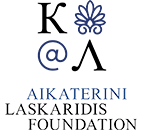Lebanon (126 Subjects)
Map of Tyre.
Shells of crustaceans discovered by Olivier in various places: Lake Mareotis in Egypt (1), Egypt (2), Orontes river (3), outskirts of Beirut (4A, 4B), outskirts of Alexandria (5a, 5b), outskirts of Sanliurfa, modern-day Turkey (8A, 8B), Alexandria (9A,9B), outskirts of Beirut (10A, 10B).
Im. 1: (1 (Α, B, C, D, E): Shrew bones found in the Ibis burials at Saqqara catacombs, Egypt. Im. 2: Bone of rat from same burial. Im. 3 A, B: Butterfly of the Belenois Aurota species, from the coast of Syria. Im. 4 A, B: Butterfly of the Colotis fausta species from the coast of Syria. Im. 5 A, B: Leaden tablet bearing inscription in Greek, from Beirut. Im. 6, 7: Amulets in cylindrical shape made of red jasper (6) and serpentine (7) bought by Olivier in Sanliurfa.
Map of Syria, Lebanon and Palestine.
Map of Tripoli in Lebanon.
Jacob Breuning and his companion Carlier de Pinon in Ottoman costumes at Tripoli, Lebanon. Also depicted their escorts, a local interpreter and a Janissary.
Jacob Breuning his companion Carlier de Pinon, and their escort, a local interpreter and a Janissary, on their way to Tripoli, Lebanon.
The tools used by Noah to construct the Ark. Port of Beirut.
Church on the outskirts of Beirut, where according to tradition Saint George killed the dragon.
Public baths at Tripoli, Lebanon.
A sheikh and a woman from Deir el Qamar, Lebanon.
A monumental building between Tartus in Syria and Tripoli in Lebanon.
Lebanese woman. In the background, Mount Lebanon.
View of Tyre, Lebanon. Inhabitants of Lebanon in traditional costume.
Frontispiece: Map showing the author's itinerary. Scene from the author's journey from Aleppo to Jerusalem.
View of Byblos (Jubayl), Lebanon. On the left, the Crusader's castle and the Roman peristyle. In the foreground, the medieval walls of the city.
View and architectural features of the temple of Bacchus (or Lesser Temple) at Baalbek, Lebanon.
Plan of of the temple of Bacchus (or Lesser Temple) at Baalbek, Lebanon.
Nautical chart of the Mediterranean sea.
Outline of the coasts of Cyprus, Syria, Lebanon and modern-day Israel as seen from the sea.
1. Elevation of the facade of the temple of Bacchus (or Lesser Temple) at Baalbek, Lebanon. Architectural features of the same temple. 2. View of the archaelogical site of Baalbek.
View of Tripoli, Lebanon.
View of Tripoli, Lebanon.
View of the castle of Heliopolis (Baalbek) in Lebanon, with the temple of Zeus in the background. Architectural and decorative features from the temple of Zeus in Baalbek. Dervish and Muslim holy man.
Map of the coasts of Syria and Lebanon.
The author dressed in traditional Lebanese costume.
Map showing the author's journey from Cairo to Beirut.
Mount Lebanon.
View of Sidon. At the centre, on the right, the city's castle by the sea.
View of Beirut.































